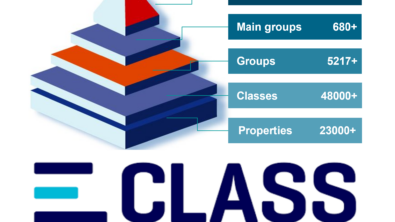Integrated Product Definition of Things

Previously, Ashok Krishnamurthy discussed how Moving Product Master Data Management Closer to the Innovation Epicenter can be beneficial to efficient decision making and the flow of value through the enterprise. Since then, we’ve explored that topic from a variety of perspectives. Let’s continue that discussion now, with a look a bit further ‘downstream’…

How can an enterprise capture knowledge from its products (‘things’?) that are in-service and factor that utilization data into the decision making surrounding the current and future generations of these products?
An increasing number of ‘things’ from coffee machines to jet engines are now connected to the Internet and continuously transmitting and receiving data related to their use. This Internet of Things (IOT) is now more ubiquitous than even a couple of years ago.
The IOT is more than a flow of big data from sensors though…at the heart of this connectivity should be product and process improvements that make these ‘things’ ever more reliable, efficient and usable.
The current mainstream use of this data stream is for predictive analytics – preventive maintenance that reduces actual failure rates and extends the in-service life of long life assets. How significant is this use of the utilization data relative to leveraging the full potential of the data stream? Greater value potentially lies in the leverage of this utilization data stream for conceiving, engineering, producing, and evolving products that serve customer needs and typical use patterns even better.
At the core of the IOT phenomenon should be improvement to the product definition process and connectivity of the people and organizations that use this data. This can lead to true and fundamental improvement of these products.
How does utilization data impact product definition?
How does continuous product evolution improve the in-service life and overall lifecycle of products?
How can product definition and evolution consider and consume the continuous feedback loop that is established by IOT enabled assets?
IOT connectivity technologies allow the utilization data to be visible to the product definition processes more dynamically and real-time than previously the case. Reports of failures, additional needs were previously not available until after the fact and after multiple incident reports, problem reports, change request etc. were processed through formal ‘gates’. Even if they were available in a timely manner, the quality of the available data was certainly not at the fidelity that has been established with IOT data streams – ie. specific assets sending back detailed data about their various functions and their performance.
How can an integrated product definition process enable and leverage the IOT?
An integrated product definition process connects organizations that may otherwise be silo-ed.
A clear view of the IOT data available inline with the core product definition can be most beneficial for the various roles that participate in the product lifecycle.

In order to truly benefit from utilization data, the product definition needs a common backbone that supports rich data and application semantics that can capture and interpret product definition data from multiple domains.
 The ability to maintain independent lifecycles for domain specific content while maintaining traceability to data from other domains is critical.
The ability to maintain independent lifecycles for domain specific content while maintaining traceability to data from other domains is critical.
This backbone system should provide means to derive flexible views of this multi-domain product definition data driven by role and purpose of use that can abstract away the underlying data complexity.
Combining core product definition and the IOT data streams, the system needs to be able to respond to questions posed by its users,such as:
 “For this product configuration and specific scope that I am working on releasing parts for, what is the most current and relevant feedback from this or similar assets that are in-service? Give me useful views of this data, and present it as most convenient for my task.”
“For this product configuration and specific scope that I am working on releasing parts for, what is the most current and relevant feedback from this or similar assets that are in-service? Give me useful views of this data, and present it as most convenient for my task.”
This requires efficient capture of utilization data streams into the product definition system by applying appropriate analytics and offering a logical combined presentation of multi-domain data driven by application and user role needs. Intrinsic to this presentation of product definition and utilization data are rich 3D visuals and advanced analytics and drill down capabilities, and in-context change management.
These ‘intelligent views’ can be a corner stone to the next generation of product definition applications and power the next generation of improvements to your products…
About the Author
Ashok Krishnamurthy is a Teamcenter Product Manager, responsible for Bill of Materials.


